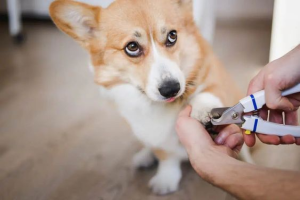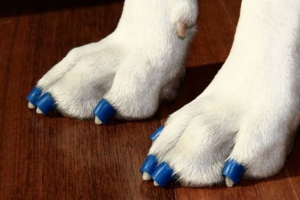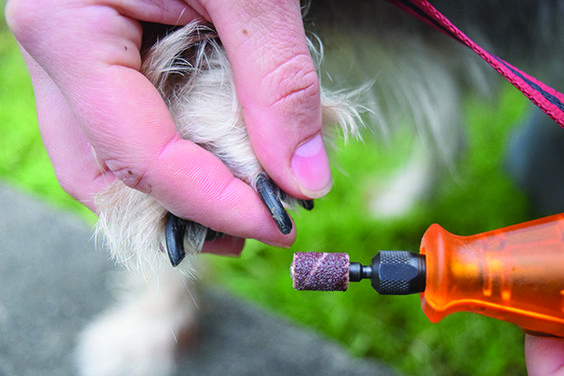Overgrown How to Cut Dog Nails
Overgrown dog nails can be uncomfortable and even painful for your furry companion, affecting their mobility and overall well-being. To trim overgrown dog nails safely, start by introducing them to the process gradually, choosing the right tools, and using proper techniques to avoid cutting into the quick, sensitive area containing blood vessels. Take your time, be patient, and provide treats and positive reinforcement to make the experience pleasant and stress-free for your dog, ensuring their nails are at an appropriate and comfortable length.
Importance of Proper Dog Nail Care
Caring for your dog’s nails is a crucial aspect of their overall health and well-being. Just like humans, dogs need regular nail maintenance to ensure they lead comfortable and active lives. Here are the key reasons why proper dog nail care is so important:
1. Comfort and Mobility
Overgrown nails can cause discomfort and pain for your furry friend. Long nails can push against the paw pads, leading to soreness and difficulty in walking or running. Properly trimmed nails help maintain a natural and comfortable posture, allowing your dog to move freely and painlessly.
2. Preventing Injury and Infections
Long nails are more likely to break, split, or snag. These issues can be painful for your dog and may even lead to infections if not addressed promptly. Infections can occur when the nails grow too long and start curving into the paw pads, creating a breeding ground for harmful bacteria.
3. Maintaining Proper Gait
Overgrown nails can alter your dog’s gait or how they walk. This can lead to joint problems and affect the alignment of their bones and muscles. Maintaining a proper gait is essential for your dog’s mobility and helps prevent more severe orthopedic issues in the future.
4. Avoiding Damage to Furniture and Flooring
Long nails can scratch and damage your furniture, flooring, and other surfaces within your home. Regular nail trimming helps prevent unnecessary wear and tear, saving you from potential repair costs. Don’t forget to visit our website for interesting information matchefashions.com
Risks of Overgrown Dog Nails
Overgrown nails can result in various issues for your dog, including
Pain and Discomfort due to Long Nails
Long nails in dogs can cause significant discomfort and pain while walking or running. When the nails extend beyond the paw pad, they can press into the soft tissue, leading to soreness and discomfort with every step. The constant pressure on the sensitive areas of the paw can create an unpleasant sensation, impacting your dog’s mobility and overall comfort.
Difficulty in Walking Caused by Overgrown Nails
Overgrown nails alter the natural gait of your dog. As the nails grow excessively, they change the way your dog walks or runs, making it difficult for them to move comfortably. The altered gait can result in an uneven distribution of weight on their paws, affecting their posture and causing unnecessary strain on their muscles and joints.
Infections Due to Curled Nails into Paw Pads
If your dog’s nails are allowed to grow too long and start curling into the paw pads, they pose a risk of infection. The curled nails can puncture the skin, creating an entry point for bacteria and other pathogens. These infections can cause redness, swelling, and inflammation, leading to further pain and discomfort for your furry companion. It’s essential to regularly check and trim your dog’s nails to prevent such infections and maintain their paw health.

Tools Required for Trimming Dog Nails
Before starting the nail-trimming process, gather the following tools:
1. Dog Nail Clippers
Choosing the right type of nail clippers is crucial and largely depends on your dog’s size and the thickness of their nails. For small to medium-sized dogs, guillotine clippers or scissor clippers work well. Guillotine clippers have a small hole where you place the nail, and a blade slides across to trim it. Scissor clippers resemble a pair of scissors and are best suited for smaller nails. For larger dogs with thicker nails, a plier-style clipper is more effective and provides better leverage.
2. Styptic Powder
Accidents can happen during nail trimming, and if you accidentally cut the quick, it may cause bleeding. Styptic powder is a vital tool to have on hand to stop the bleeding quickly and effectively. It contains ingredients like aluminum sulfate or potassium ferric sulfate that help to coagulate the blood and staunch bleeding, providing immediate relief.
How to Safely Trim Overgrown Dog Nails
a. Preparing Your Dog
Before starting the trimming process:
Familiarize Your Dog: Introduce them to the tools and touch their paws to desensitize them.
Stay Calm: Ensure a calm environment to keep your dog at ease.
b. Choosing the Right Time and Place
Select a Quiet Area: Choose a quiet place where your dog feels comfortable and relaxed.
Choose the Right Time: Opt for a time when your dog is relaxed and not overly energetic.
c. Techniques for Trimming Dog Nails
Inspect the Nails: Identify the quick and trim a small amount at a time to avoid cutting it.
Use the Right Technique: Hold the clippers at the right angle and trim in a smooth, controlled manner.
Tips for a Successful Nail Trimming Session
Trimming your dog’s nails may initially seem daunting, but with the right approach and techniques, you can make it a positive and successful experience for both you and your furry companion. Here are some valuable tips to ensure a successful nail-trimming session:
Be Patient and Calm
The key to a successful nail-trimming session is patience and a calm demeanor. Dogs can sense your emotions, so staying relaxed will help your dog feel more at ease during the process. Take your time and don’t rush the trimming.
Introduce Nail Trimming Gradually
Introduce the nail clippers or grinder to your dog gradually before attempting to trim. Let them sniff and get familiar with the tools. This will reduce anxiety and make the actual trimming session less stressful.
Offer Treats and Praise
Positive reinforcement works wonders. Offer your dog treats and praise throughout the trimming session to create a positive association with the experience. Reward them for good behavior to make the process enjoyable for them.
Start Slowly and Trim a Little at a Time
Begin with a gentle touch to your dog’s paws and nails without the clippers. Gradually progress to lightly pressing the clippers against their nails. Trim a small amount at a time, ensuring you’re not cutting into the quick.
What to Do If You Accidentally Cut the Quick
If you accidentally cut the quick and your dog starts bleeding:
1. Stay Calm and Assess the Situation
In the event of bleeding, it’s crucial to remain calm. Take a moment to assess the severity of the bleeding and locate the bleeding spot on the nail. Assessing the situation calmly will help you respond effectively and assist your dog promptly.
2. Apply Styptic Powder to Stop the Bleeding
Styptic powder is a vital tool that aids in stopping bleeding from the nail quickly. Dip the bleeding nail into the styptic powder or use a clean applicator to apply the powder to the affected area. The styptic powder’s coagulating properties will help stop the bleeding by forming a clot at the cut site.
3. Apply Gentle Pressure
After applying the styptic powder, apply gentle pressure to the nail to aid in stopping the bleeding. Hold the nail in place for a few seconds to allow the powder to take effect and staunch the blood flow.

When to Seek Professional Help
If you’re uncomfortable trimming your dog’s nails or if your dog has extremely overgrown or difficult-to-trim nails, it’s advisable to seek professional assistance from a veterinarian or a groomer.
Conclusion
Proper nail care is an essential aspect of ensuring your dog’s overall health and happiness. By following the outlined steps and techniques for trimming overgrown dog nails, you can keep your furry companion comfortable and active. Remember to approach nail trimming with patience, care, and love for your beloved pet.
FAQs
Q: How often should I trim my dog’s nails?
A: The frequency of nail trimming varies based on your dog’s activity level and breed. Generally, monthly trimming is a good starting point.
Q: Can I use human nail clippers on my dog?
A: It’s recommended to use clippers specifically designed for dogs to ensure a safe and effective trimming experience.
Q: Are there alternatives to nail clippers for trimming dog nails?
A: Yes, options like nail grinders or files can also be used for trimming dog nails, especially for dogs sensitive to clippers.
Q: What is the quick in a dog’s nail?
A: The quick is a blood vessel and nerve inside a dog’s nail. Cutting it causes bleeding and discomfort.
Q: How can I train my dog to tolerate nail trimming?
A: Gradually introduce the tools, use positive reinforcement, and associate nail trimming with rewards to help your dog become comfortable with the process.







